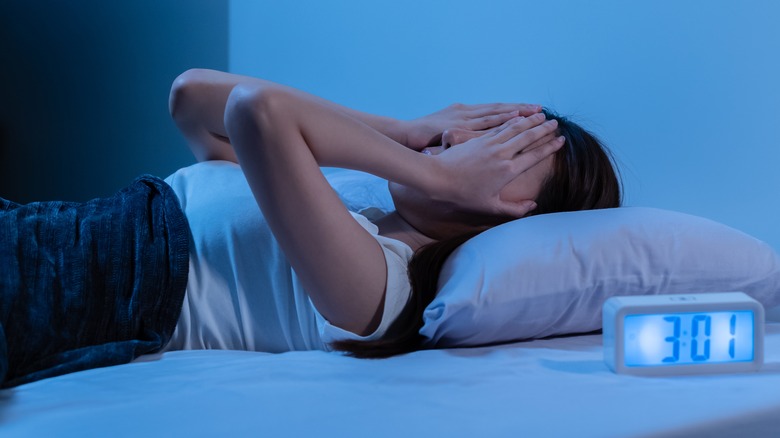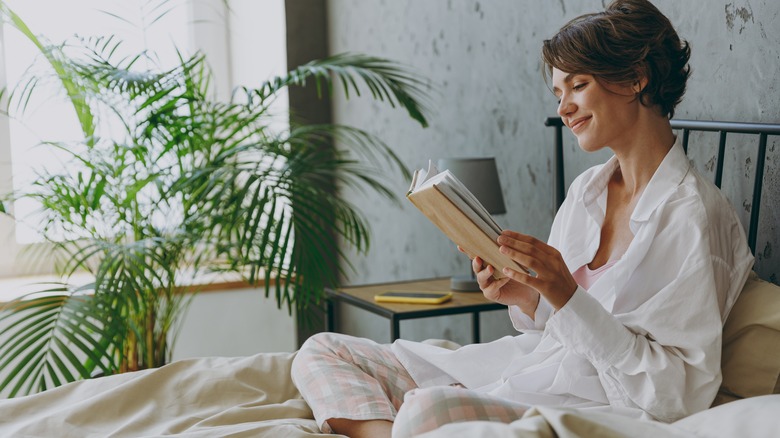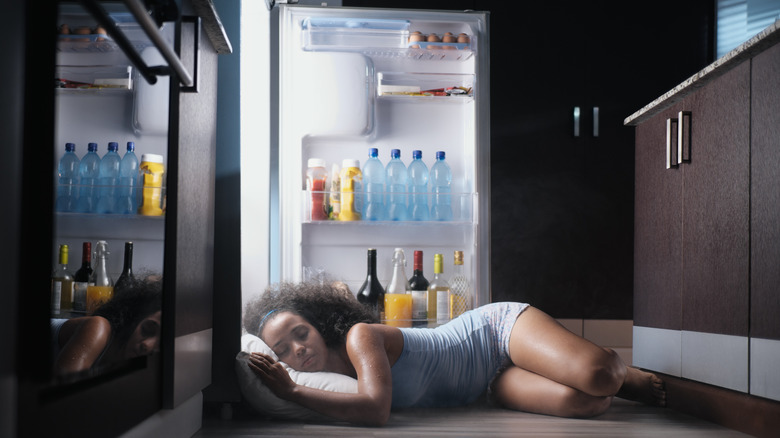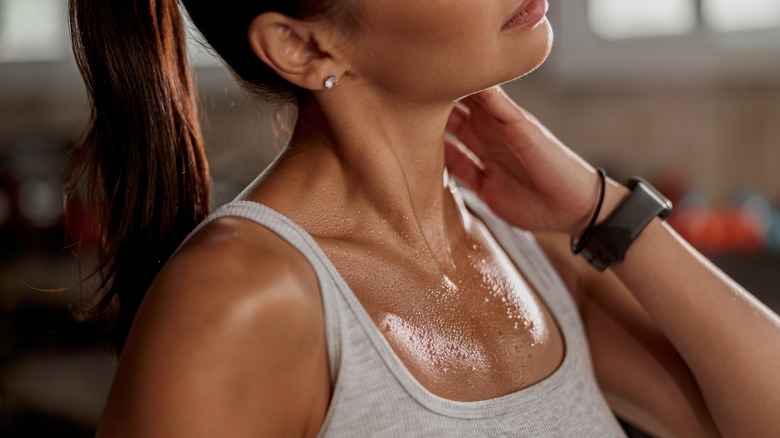How To Handle Antidepressant-Induced Night Sweats (Because That's A Thing)
Taking steps to honor your health by going on antidepressants is a commendable feat. It's hard enough already to be in a place mentally where you know that antidepressants are your best solution for starting to help your mental health. Even more difficult is that antidepressants come with a slew of difficult physical symptoms, such as impacting your menstrual cycle, which makes appreciating the positive effects challenging. One of those symptoms can include potent night sweats, which are completely normal symptoms of this medication. While they may be embarrassing to a new partner or one-night fling, know that you aren't alone in this. As your brain and body adjust to the medication, this side effect may begin to fade. If this concerns you, or you feel like the sweats aren't subsiding, it may be worth talking to your doctor.
The Mayo Clinic lists antidepressants as one of the medications that can trigger night sweats. These flashes of perspiration are characterized by happening typically while you sleep, are heavier than normal sweating, and can soak your clothing and sheets. Night sweats are uncomfortable to deal with, and impact your skin and sleep. There is no definitive cure for night sweats, but there are different tricks and practices that can help you alleviate them.
Switch out your sheets and pajamas for a breathable material
Your bed sheets may play a big factor in the severity of your night sweats. Materials like flannel and jersey are not super breathable, as they can trap additional heat and moisture. Instead, opt for materials like cotton, linen, or bamboo fibers. These breathable materials allow for better circulation of air and don't retain as much moisture. The same can be applied to your pajamas as well. Choosing a lightweight fabric can keep you cool through summer, in addition to year-round.
Opting for lightweight, breathable pajamas will work to keep you cooler. Go for a more minimal coverage night outfit like shorts or a nightgown so there's more exposed skin, allowing for less heat to be trapped against your body and providing a cooler night's sleep. While it may feel counterintuitive, it's recommended to work in a layer method for your sleep setup. This allows for greater control of your comfort and coverage during the night. If you start to feel hot you can remove a layer of blankets or a sheet to allow for more air flow.
Be mindful of what you eat and drink before bed
Spicy food, alcohol, and warm beverages like tea can elevate your internal body temperature. Avoiding foods that fall into these categories at least five hours before you sleep ensures they won't worsen your night sweats. You don't have to completely cut them out of your life, but being mindful of when you consume them can help remove an additional sweat factor.
Instead, go for lots of water and electrolyte-filled food and drink to help your body recover after nighttime sweats. Excessive sweating can dehydrate you and deplete electrolytes, but you can help diminish the effects of this by making sure you prepare before it happens. It's also recommended to give your body plenty of time to digest food before you go to sleep to avoid any additional work in the body that could raise your temperature. Make sure your last meal happens two to four hours before bedtime to give yourself plenty of time to digest. If you find yourself excessively sweating not just at night, and you have taken precautions outside of your nighttime routine it might be something more than just side effects. Things like excessive boob sweat shouldn't be ignored if persistent. As always, trust your gut and reach out to a professional if something feels off.
Utilize a cooling pad or ice pack
A gel mattress cooling pad can provide long-lasting relief for nighttime sweats. These are great because they cool you from under your sheets, providing a more comfortable night's sleep for your entire body. There are a variety of cooling pads to choose from, ranging in size and price so you can find one that fits your exact needs and budget. A cooling pad works by absorbing extra body heat and trapping it in the inner section of the pad, while the outer layer of the pad stays cool to the touch.
If a cooling pad feels like too much of an investment for you, you can always opt for a wrapped ice pack under your pillow. Keeping your head cool can create a pleasant cooling effect for the rest of your body. Just be sure to tightly wrap and secure it so it won't leak on your bed. We don't need more moisture in a situation like this. You can place the ice pack under your pillow or in your pillowcase, depending on what's more comfortable for you.



